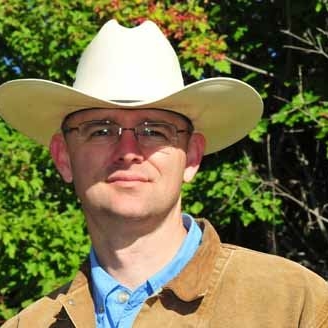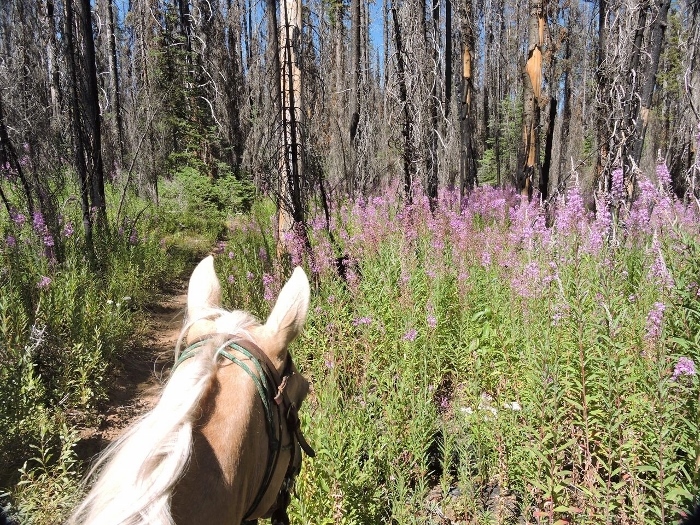How to ‘Leave No Trace’ While Recreating with Your Horse
by Robert Eversole
April’s showers have brought May’s flowers, warmer weather, and rapidly improving trail conditions across the Pacific Northwest. As trail riders, one important thing to remember is that most of the areas that we enjoy are publicly held. Equestrians have a unique opportunity to preserve access to the trails that we love. One way to do this is to remember the principles of Leave No Trace (LNT) when we’re out and about. These principles are just as applicable to the recreational trail rider as they are to the dedicated back country packer. In fact, the actions of those of us that ride in the “front country” may have even greater impact due to our larger numbers. Trail riding offers us tremendous enjoyment and gratification; following these simple and easy steps will help us to protect that pleasure and prevent restrictions from threatening our ability to ride.
Before you head out on a ride consider where you’re going to. If the ride itinerary includes typically muddy areas a different route or even a change in trail system can prevent lots of churned mud and damaged trails. By saving rides in these areas for drier times we can dramatically minimize our impact. After all, the premise of LNT is that others will never know we were there at all. Once we’re on the trail, our chances to reduce impact become more important. To LNT remember the following: Travel on durable surfaces. If, despite your best efforts, you should come across a muddy area, ride on. Don’t detour around the nasty spot, despite what your horse most likely wants to do. Skirting the muddy patch will cause the trail to widen and become even worse in the future. Sometimes mud is part of the trail rider’s challenge, embrace it. Stay on the trail. Unless you’re riding in the open country there will most likely be trails to follow. Stay on them if at all possible and avoid creating your own switchbacks and short cuts. You’ve waited all week for this ride so savor all of it by avoiding shortcuts.
While we don’t mind the occasional “road apples” that our mounts leave behind, other trail users that we share the trails with may object. To reduce our impact and potential conflicts don’t let your horse stop on the trail to make a deposit. By maintaining a steady pace the manure will naturally scatter behind, speeding up decomposition and causing less bother for other trail users. During breaks for lunch, or otherwise, consider the following when tying your mount: Tie only to live trees that are greater than 8 inches in diameter. Wrap the lead rope an extra time or two around the tree to reduce potential damage to the bark. Another way to be kind to the tree is to teach your horse to stand quietly. Horses that paw can compact the soil around the trunk and potentially harm the tree. I carry and use hobbles for my horses that have a hard time refraining.
Although it should go without saying, remember to pack out everything that you packed in. How does a 12 oz. can of your favorite beverage weigh more empty than full? If you take it out bring it back. Trail users across all groups are guilty of leaving things behind. Help keep your trails clean and enjoyable for years to come by simply packing everything out. Closely related to the above is what I like to call “leaving negative trace.” This is done by leaving the trail in a better condition than you found it. If you see an old can or other trash on the side of the trail pick it up and pack it out. A little preventative maintenance can make a big difference. Small bits of trash such as cigarette butts, candy wrappers, twist ties, etc., are common trail eyesores and should all be packed out.
Leave No Trace practices are easy to learn, easier to practice, and will help protect equestrian access to the trails we cherish far into the future. By following these simple steps the equestrian community can become leaders in the LNT movement and set the example for other groups.
As always for more tips on trail riding, trail safety, and of course the largest source of horse and mule riding and camping areas in North America please visit www.TrailMeister.com.
Published May 2013 Issue

Robert Eversole, ”the trail meister,” owns www.TrailMeister.com, the largest database of horse riding and camping areas in the U.S. with free trail and trailhead information, trail maps, and much more to help horse enthusiasts experience the joys of trail riding. Robert is a registered riding instructor with PATH International, a mounted search and rescue team member, and a U.S. Marine who has served on the board of the Backcountry Horsemen of Washington (BCHW). He is enjoying his new career helping fellow trail riders stay found and safe on the trail. When not on the trail, The Trail Meister resides near Spokane, WA and teaches land navigation to a wide variety of outdoor groups across the nation. For North America’s largest horse trail and camping directory, trail tips, and more, visit www.TrailMeister.com.






